BACK TO finale_winnerS
Nippon Paint Colour Award: Architectural Category
THERMOS BALLOON
Thermos Balloon This project addresses the global issue of methane gas generated from landfills by proposing a solution that merges both architecture and infrastructure. The "Thermos Balloon" aims to transform methane, a harmful byproduct, into a valuable resource while minimizing environmental impact. The design consists of three main components: a pyramid for collecting methane, a […]

Thermos Balloon
This project addresses the global issue of methane gas generated from landfills by proposing a solution that merges both architecture and infrastructure. The "Thermos Balloon" aims to transform methane, a harmful byproduct, into a valuable resource while minimizing environmental impact.
The design consists of three main components: a pyramid for collecting methane, a cube for creating methane hydrate, and a sphere to store the methane. This design is scalable and can be applied to other cities dealing with similar landfill issues.
The concept was inspired by my experience in a landfill ecosystem workshop. I was struck by the large gas holders along the coast and the fear they invoked. I imagined the spheres rolling, crushing houses, and leaking gas. However, I thought that if these spheres floated in the air, they could transform from a frightening presence into a poetic landscape.
The site I focus on is Yumeshima, an artificial island in Osaka, currently being developed for Expo 2025, with plans for a casino after the event. However, methane explosions occurred in 2023, and there remains a risk of explosions on the island today. This problem of methane gas is common in many coastal cities across Asia, where land reclamation has been used to expand urban areas. As landfills increase, methane generation is inevitable, contributing to both global warming and explosion risks.
Cities have an inherent structure that produces methane: they collect, consume, discard, and bury resources. This leads to the question: What role should architecture play in this system? Rather than rejecting this system, can we elevate it through architecture?
The Thermos Balloon is my proposed solution. This system offers an infrastructure and architectural design that functions not only as a solution for Yumeshima but also for other cities facing similar challenges. The pyramid collects methane from the anaerobic landfill, the cube generates methane hydrate, and the sphere stores the methane. This design transcends time and place, providing a scalable solution to the growing methane problem.
The Thermos Balloon is a "poetic redesign" of infrastructure, transforming waste into energy and creating a system that is sustainable and scalable. This is not just a vision for one location, but a proposal for cities globally.
The program consists of several stages:
The floating balloon itself has a double-layer structure, like a thermos, where the outer layer is filled with helium, and the inner layer contains methane. The outer membrane is titanium, and the inner membrane is made from aramid fibers. The surface is mirror-coated to prevent heat from reaching the methane, and the helium layer insulates it.
This facility is fully automated, with no human intervention required. The Thermos Balloon represents an innovative approach to managing methane, turning landfills into energy hubs while minimizing environmental damage.
Methane is a silent contributor to global warming, and as landfill waste continues to grow, so will the generation of methane gas. The one thing I am certain of is that methane gas will continue to be generated, without a doubt.
The Thermos Balloon provides a system that works in harmony with the environment, collecting methane and transforming it into a valuable resource. It is not only an architectural solution but also a vision for a future where architecture plays a critical role in solving the environmental challenges we face. I envision a future hundreds of years from now where the Thermos Balloon, while collecting methane alongside human life, continues to float like a flower offering tribute to the dying urban waterfront.
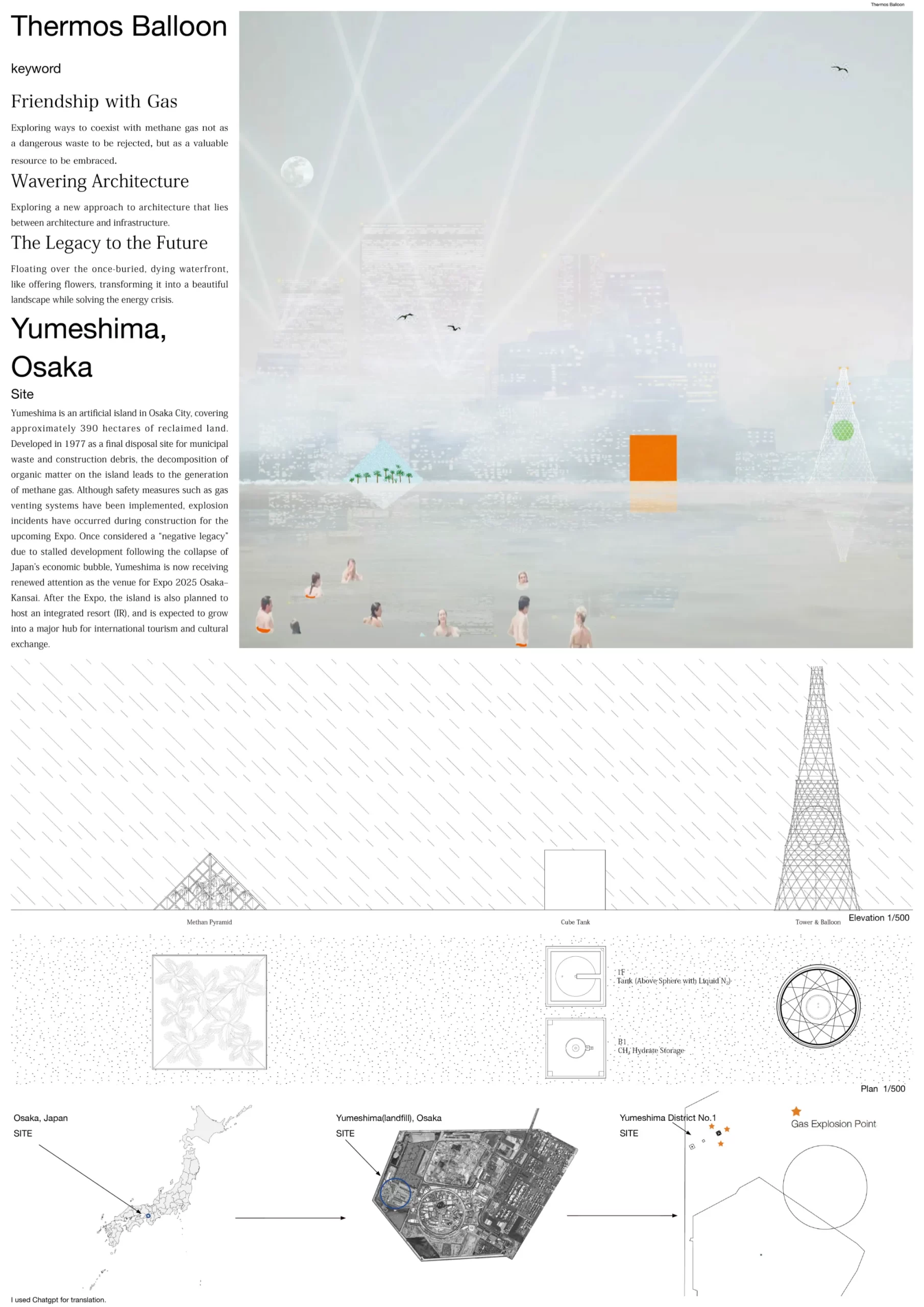
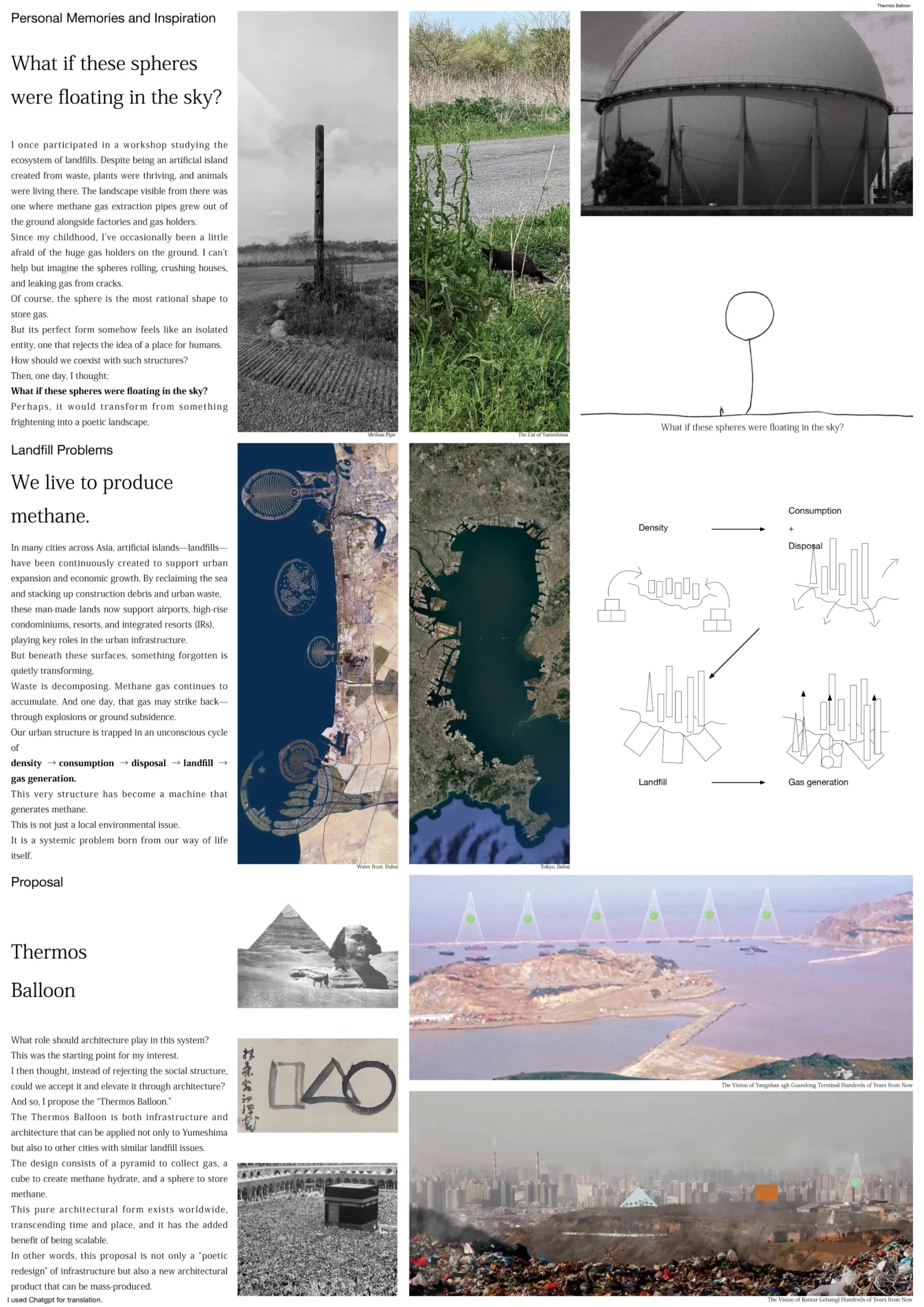
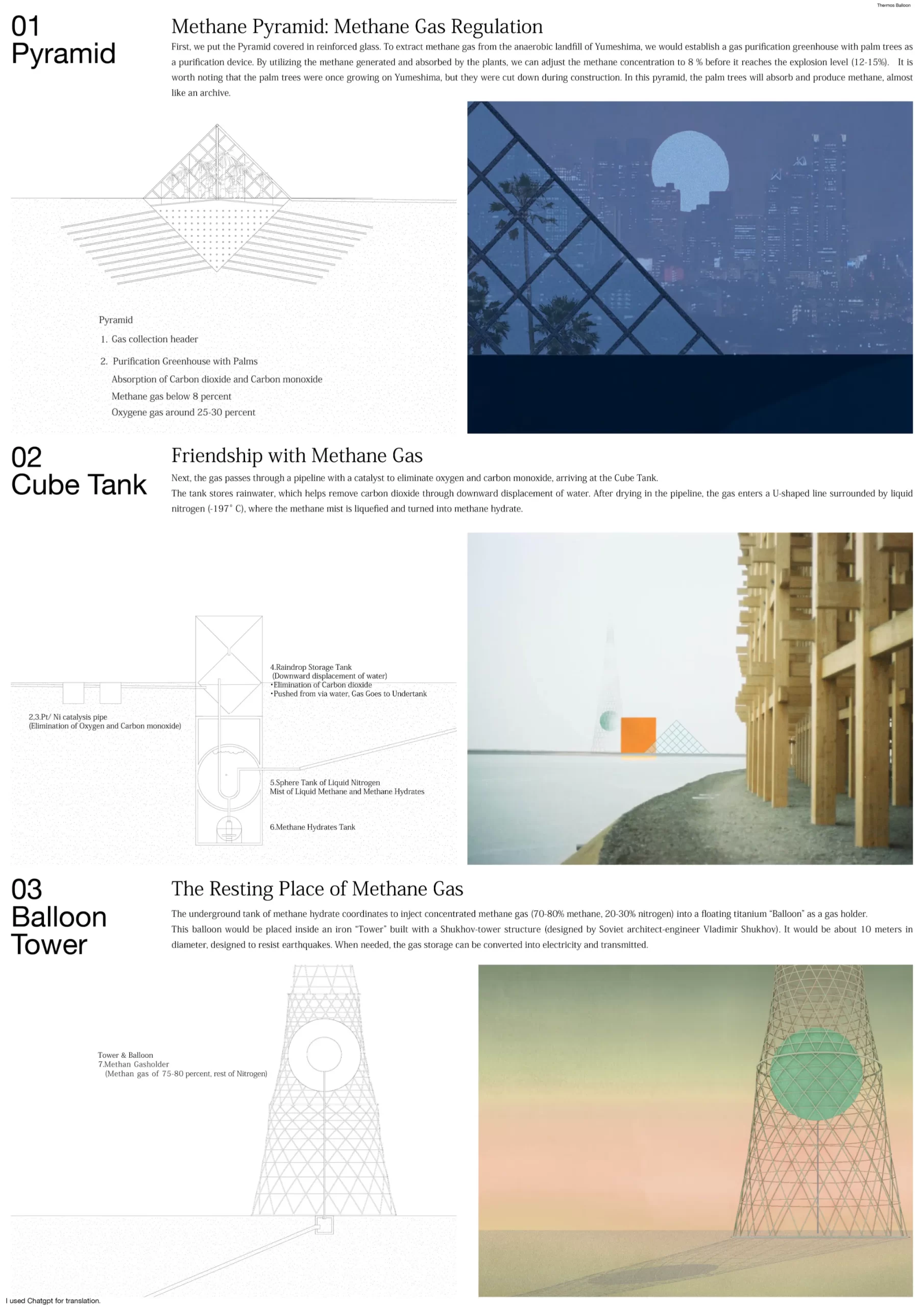
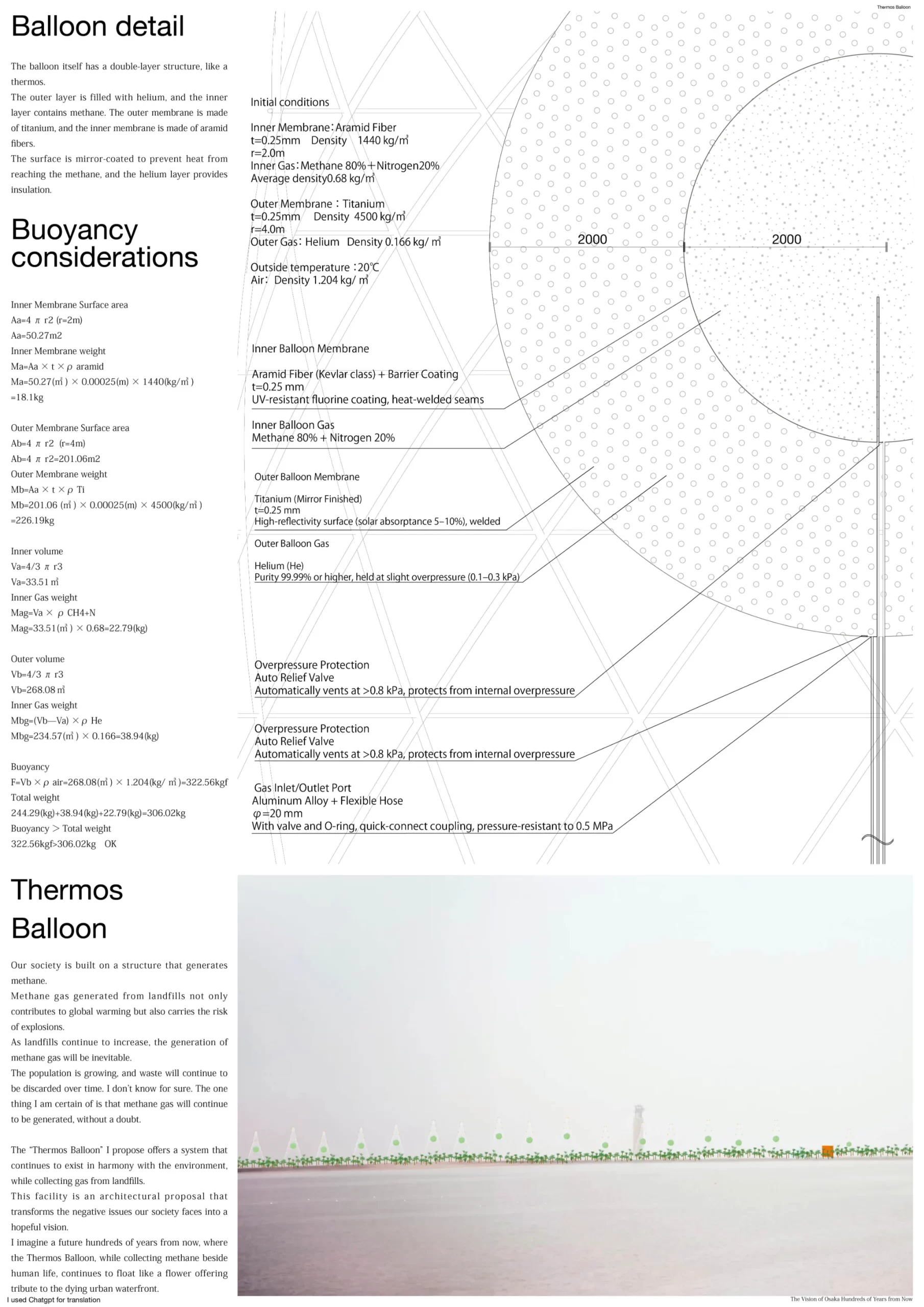
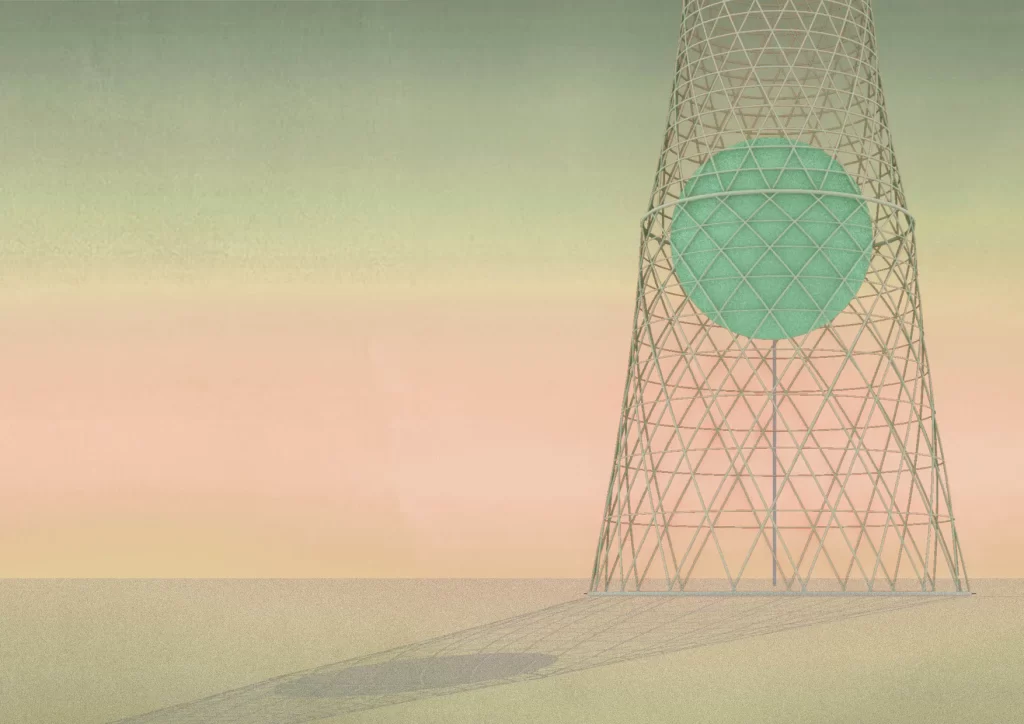
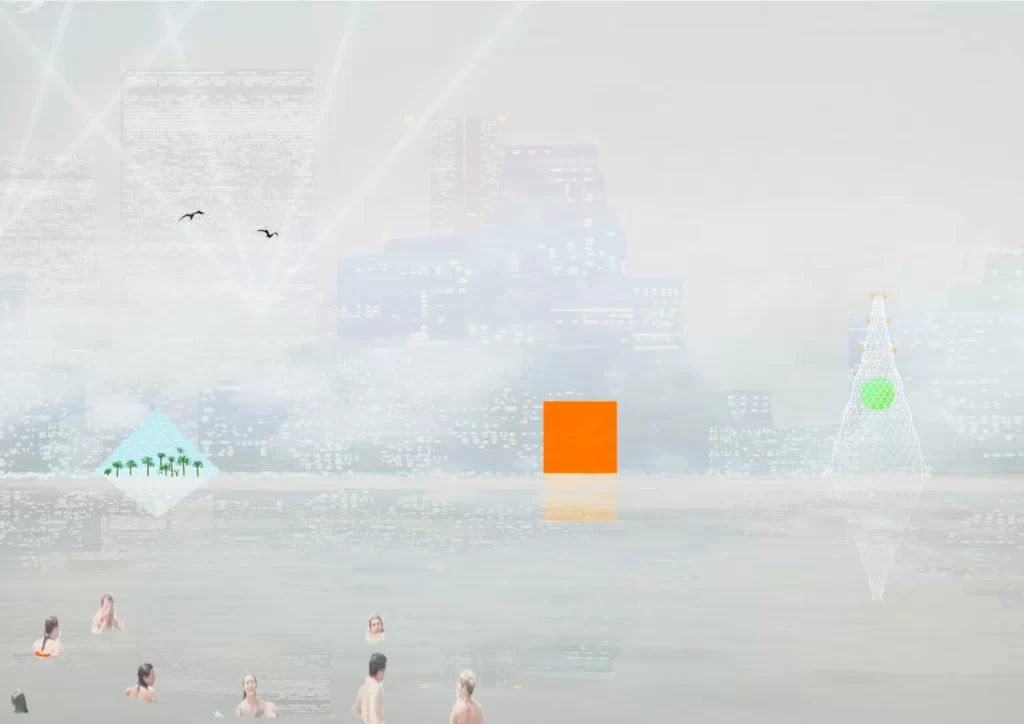
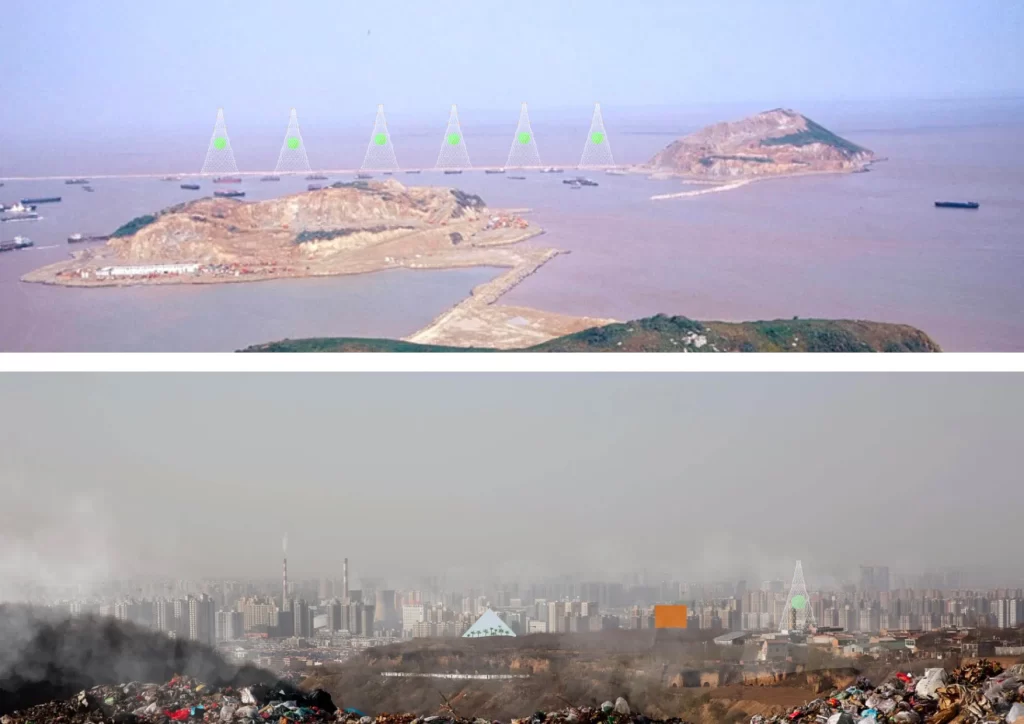
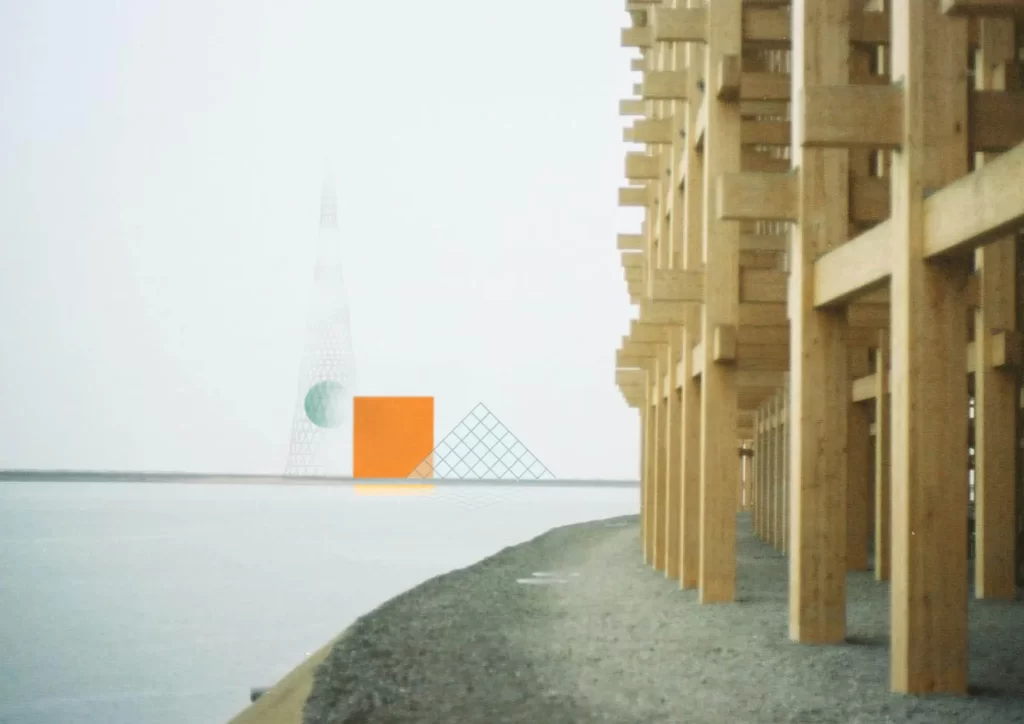
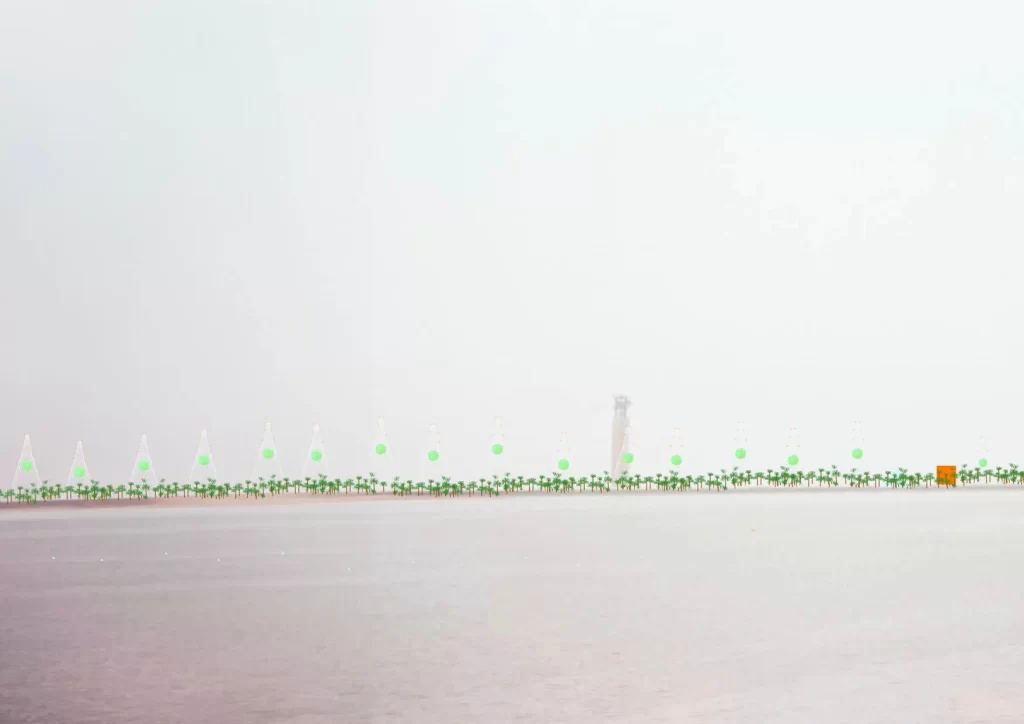

Showcase your design to an international audience
SUBMIT NOW
Image: Agrapolis Urban Permaculture Farm by David Johanes Palar
Top
Thermos Balloon This project addresses the global issue of methane gas generated from landfills by proposing a solution that merges both architecture and infrastructure. The "Thermos Balloon" aims to transform methane, a harmful byproduct, into a valuable resource while minimizing environmental impact. The floating balloon itself has a double-layer structure, like a thermos, where the outer layer is filled with helium, and the inner layer contains methane. The outer membrane is titanium, and the inner membrane is made from aramid fibers. The surface is mirror-coated to prevent heat from reaching the methane, and the helium layer insulates it.
The design consists of three main components: a pyramid for collecting methane, a cube for creating methane hydrate, and a sphere to store the methane. This design is scalable and can be applied to other cities dealing with similar landfill issues.
The concept was inspired by my experience in a landfill ecosystem workshop. I was struck by the large gas holders along the coast and the fear they invoked. I imagined the spheres rolling, crushing houses, and leaking gas. However, I thought that if these spheres floated in the air, they could transform from a frightening presence into a poetic landscape.
The site I focus on is Yumeshima, an artificial island in Osaka, currently being developed for Expo 2025, with plans for a casino after the event. However, methane explosions occurred in 2023, and there remains a risk of explosions on the island today. This problem of methane gas is common in many coastal cities across Asia, where land reclamation has been used to expand urban areas. As landfills increase, methane generation is inevitable, contributing to both global warming and explosion risks.
Cities have an inherent structure that produces methane: they collect, consume, discard, and bury resources. This leads to the question: What role should architecture play in this system? Rather than rejecting this system, can we elevate it through architecture?
The Thermos Balloon is my proposed solution. This system offers an infrastructure and architectural design that functions not only as a solution for Yumeshima but also for other cities facing similar challenges. The pyramid collects methane from the anaerobic landfill, the cube generates methane hydrate, and the sphere stores the methane. This design transcends time and place, providing a scalable solution to the growing methane problem.
The Thermos Balloon is a "poetic redesign" of infrastructure, transforming waste into energy and creating a system that is sustainable and scalable. This is not just a vision for one location, but a proposal for cities globally.
The program consists of several stages:
This facility is fully automated, with no human intervention required. The Thermos Balloon represents an innovative approach to managing methane, turning landfills into energy hubs while minimizing environmental damage.
Methane is a silent contributor to global warming, and as landfill waste continues to grow, so will the generation of methane gas. The one thing I am certain of is that methane gas will continue to be generated, without a doubt.
The Thermos Balloon provides a system that works in harmony with the environment, collecting methane and transforming it into a valuable resource. It is not only an architectural solution but also a vision for a future where architecture plays a critical role in solving the environmental challenges we face. I envision a future hundreds of years from now where the Thermos Balloon, while collecting methane alongside human life, continues to float like a flower offering tribute to the dying urban waterfront.








